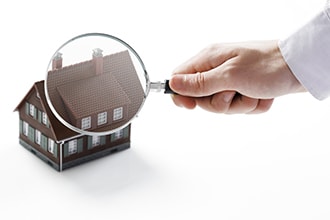Home Inspection Checklist: How to Prepare for Your Home’s Inspection

To sail through your home inspection process, we recommend focusing on these areas first, before you start priming and painting all those walls.
Mold
Perhaps nothing else sends more chills up new homeowners spines than when they hear the word “mold.” When homebuyers hear a home has a mold problem, thoughts of allergies, irritants, and even potential toxic substances come to mind. So what can you do? If you suspect your mold problem is minor, you can use a spray bottle of vinegar to clean the area. Just spray, let it set, respray, and wipe again. Also, keep your air conditioner running in that area to prevent future growth. However, mold almost always means water exists in that area, so have a home inspector verify that pools of water aren’t laying behind the mold.
Repairing a Roof
Visions of dollar signs come to mind when home buyers hear that a house needs a new roof. If rainstorms have you breaking out buckets, we recommend having your roof inspected before you go on the market. Sometimes, you don’t need an entirely new roof. Small fixes like simply unclogging your gutters can often improve the leak situation, but a contractor or inspector will better be able to make that call. For instance, we often notice that installing a ridge vent will help with dry rot problems. Or, sometimes your shingles are cracking because they’ve been installed improperly. By having an inspector check your roof before you sell your home, you’ll be aware of what repairs – if any – are needed.
Plumbing
How’s your home’s plumbing? Do you have good water pressure? Does it take awhile for water to get warm? And how new is your water heater, exactly? Besides checking these points, home inspectors will flush toilets and run faucets, all in the name of testing your home’s indoor and outdoor plumbing.
Electrical Systems
Especially in older homes, it’s common to see electrical cords and extension cables in rooms. While it may be necessary for your lifestyle, it places a burden on your home’s electrical system and could even lead to a fire. Perhaps even more of a concern, exposed wires pose a serious fire safety violation Often found in older homes, spliced wires, or wires conjoined by electrical tape, may be a quick DIY fix, but a certified electrician will need to stabilize the situation and install a proper electrical system. During this part, a home inspector may also check for the presence of smoke detectors, especially if your state mandates them.
Ventilation
Is your home properly ventilated? Does it include ventilation methods other than just opening windows? Especially in colder climates where opening windows isn’t always an option, ensuring that your home is properly ventilated is important. Poor ventilation can lead to the growth of mold or rot and seriously impact your home’s air quality.
